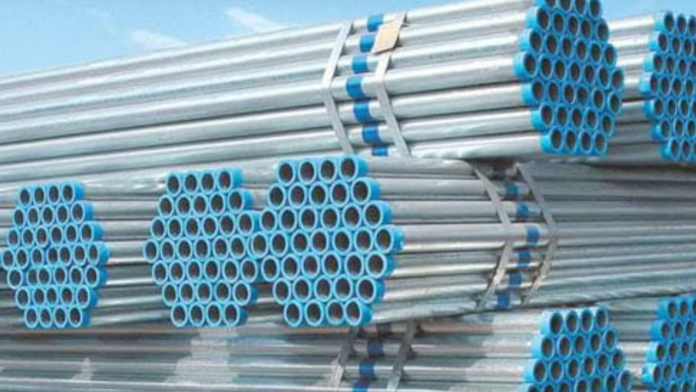As industries grow increasingly reliant on sturdy and dependable piping systems, the selection of the right pipe becomes a pivotal decision that can impact performance, safety, and even sustainability. Steel pipes stand as the unsung heroes of modern infrastructure, facilitating the seamless transportation of liquids, gases, and even solids.
Yet, beneath the surface of this ubiquitous conduit lies a diverse spectrum of pipe types, each uniquely engineered to fulfill distinct functions. Among them, ASTM A53 Steel Pipe emerges as a standout contender, not merely due to its utilitarian role but because of the remarkable attributes that distinguish it from other steel pipe variants.
Knowledge about ASTM A53 Steel Pipe
The composition of ASTM A53 steel is finely calibrated to strike a harmonious balance between strength, resilience, and versatility. Through a combination of carbon content and strategically infused alloying elements, this steel variant assumes a form that stands resilient against the challenges posed by diverse applications.
From the initial selection of raw materials to the final stages of fabrication, a symphony of technical prowess and quality control measures ensures that every ASTM A53 steel pipe that emerges from the production line is a manifestation of excellence.
Important Differences Between ASTM A53 Steel Pipes
The ASTM A53 steel pipe showcases a blend of strength, resilience, and adaptability that sets it apart from other types of steel pipes, making it a preferred choice across a spectrum of industries and applications.
Grade Classification and Specifications
At the heart of ASTM A53 steel pipe’s versatility is its classification into various grades, each with distinct specifications catering to specific needs. Whether for standard applications or high-stress environments, the comprehensive gradation empowers industries to select precisely the right grade that aligns with their project requirements.
Versatile Applications
The exceptional adaptability of ASTM A53 steel pipe finds expression in its wide-ranging applications. From serving as load-bearing pillars in construction to delivering fluids in plumbing systems, this steel variant effortlessly navigates diverse sectors, proving its indispensability across the industrial landscape.
Corrosion Resistance and Coatings
The dual armor of inherent corrosion resistance and a multitude of coating options sets ASTM A53 steel pipe apart in the battle against deterioration. Its ability to withstand corrosive elements and extend its service life makes it a stalwart choice for environments where corrosion poses a constant threat.
Pressure and Temperature Performance
ASTM A53 steel pipe’s robust design and metallurgical characteristics equip it to thrive under high-pressure and temperature conditions. In industries where pipes endure extreme forces and elevated heat, their exceptional performance ensures structural integrity and reliability.
Weld ability and Joining Techniques
Ease of installation and maintenance is elevated by ASTM A53 steel pipe’s exceptional weld ability and compatibility with various joining techniques. This characteristic streamlines assembly, repairs, and modifications, translating into efficiency and longevity for piping systems.
Cost-Effectiveness and Sustainability
As industries tread the path of fiscal prudence and ecological consciousness, ASTM A53 steel pipe emerges as an ally. Its cost-effectiveness aligns with budgetary considerations, while its sustainable attributes cater to the growing demand for environmentally responsible choices.
Compliance with Industry Standards
The adherence of ASTM A53 steel pipe to industry standards is a testament to its quality and reliability. Its conformity ensures uniformity across applications, instilling confidence in stakeholders regarding safety, performance, and adherence to established norms.
ASTM A53 Steel Pipe VS. Other Types
In the realm of practical application, the prowess of ASTM A53 steel pipe becomes vividly apparent through real-world comparisons with other steel pipe variants. Case studies and performance evaluations underscore its superiority in critical aspects such as corrosion resistance, pressure handling, and versatility.
From withstanding harsh environments to meeting safety requirements, these real-world scenarios provide compelling evidence of why ASTM A53 steel pipe stands as a reliable choice across the spectrum of steel piping options.
Conclusion
As industries continue to evolve, ASTM A53 steel pipe’s ongoing advancements and real-world comparisons solidify its role as a stalwart solution, reinforcing its status as a superior choice that contributes to the resilience and progress of diverse applications across the engineering landscape.











